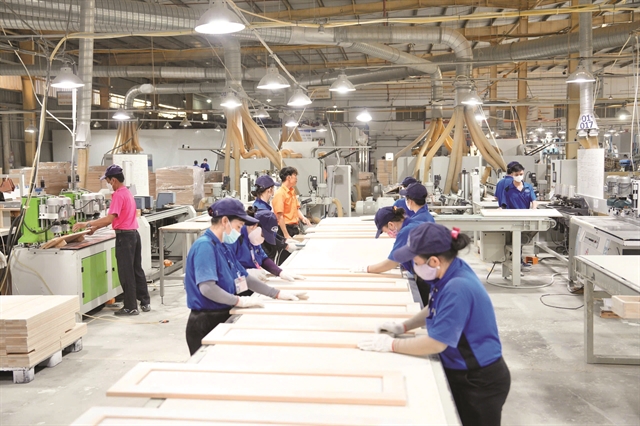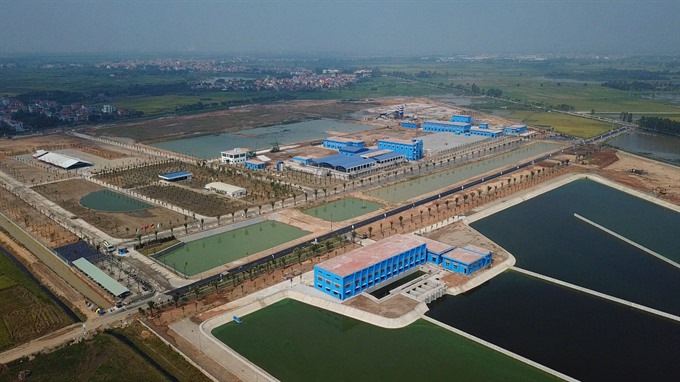 Society
Society

The first phase of the factory treating surface water of the Đuống River officially came into operation on Saturday after only 15 months of construction, supplying for about one-third of Hà Nội’s population.
 |
| An aerial view of the Đuống River surface water treatment plant. — VNS Photo |
HÀ NỘI — The first phase of the factory treating surface water of the Đuống River officially came into operation on Saturday after only 15 months of construction, supplying for about one-third of Hà Nội’s population.
The plant, the largest of its kind in the northern region, located in Trung Mậu and Phù Đổng communes of the suburban district of Gia Lâm, has a total investment of almost VNĐ5 trillion (US$214.1 million) in the first phase by the Đuống River Surface Water JSC.
It will provide about 150,000cu.m of water per day for about three million people in northeastern and southern areas of Hà Nội, industrial parks along Road 179, and some adjacent areas in Bắc Ninh and Hưng Yên provinces.
The plant is fully auto-operated applying the most advanced technology in the world. It treats and recycles the used water to prevent the environment pollution. All equipments imported from the Europe and G7 country, are at most productive, stable operation, long lasting and energy savings.
The plant is expected to help the capital city gradually replace polluted underground water with surface water to serve local demand.
Addressing the inauguration ceremony, Chairman of the municipal People’s Committee Nguyễn Đức Chung applauded the investor’s efforts to put the plant into use ahead of schedule, adding it will help improve the living standards and health of local residents.
He asked the company to continue harnessing resources to raise the factory’s daily capacity to 300,000cu.m of water in the second phase, and prepare to increase the output to 600,000cu.m by 2020 and 900,000cu.m by 2022.
Chung requested relevant agencies, especially the municipal Department of Construction, to instruct districts, businesses and residents to use water from this factory so as to gradually reduce the use of groundwater.
Đỗ Thị Kim Liên, president of the plant, noted that with the goal of sustainable development, the plant is still studying and will apply measures to reuse sewage sludge and take advantage of the ground to install a system of solar energy batteries in order to reduce costs.
Also at the ceremony, work on the second phase of the plant began. — VNS